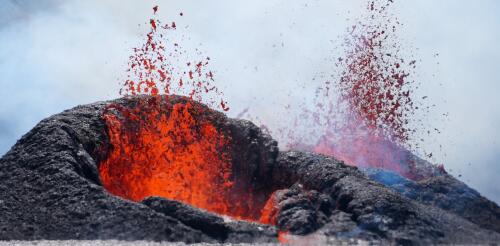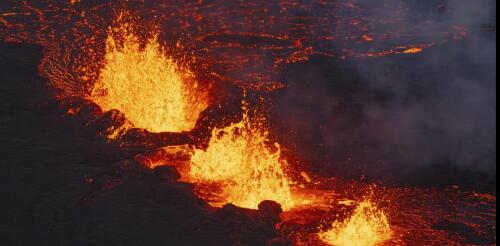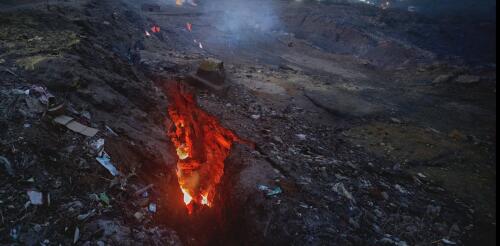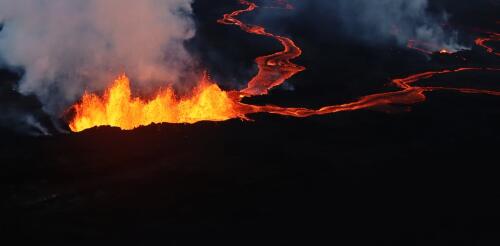Magma
Curious Kids is a series for children of all ages. If you have a question you’d like an expert to answer, send it to curiouskidsus@theconversation.com. Could we use volcanoes to make electricity? – Lawrence, age 7, Dublin, California Turning red-hot lava from an active volcano into electricity would be dangerous and unreliable. Volcanoes don’t erupt on predictable schedules, and lava cools too quickly. But many countries, including the U.S., have found ways to tap volcanic heat to make electricity. Geothermal energy comes from heat generated by natural processes deep within the Earth. In most areas, this heat only warms rocks and underground water near the surface. In volcanically active regions, however, the heat is much more intense. Sometimes it melts rock, forming magma. Volcanoes act like giant heat vents, raising magma closer to Earth’s surface. Some of this mo...
Lava erupted through a fissure in Iceland’s Reykjanes Peninsula on Dec. 18, 2023, shooting almost 100 feet (30 meters) in the air in its early hours. Icelanders had been anticipating an eruption in the area for weeks, ever since a swarm of thousands of small earthquakes began on Oct. 23 northeast of the fishing town of Grindavík, signaling volcanic activity below. In the days that followed those first rumblings, a series of small rifts opened under the town, breaking streets, rupturing utility lines and tilting houses. GPS stations detected the ground sinking and rising over a large area. Geologists from the Icelandic Met Office interpreted the events as evidence that a basalt dike – pressurized magma that forces its way into a fracture – had intruded under Grindavík. The activity there had tapered off by early December, but 2.5 miles (4 kilometers) north of town, the ground under the Svartsengi geothermal power plant was moving....
Curious Kids is a series for children of all ages. If you have a question you’d like an expert to answer, send it to curiouskidsus@theconversation.com. Why don’t rocks burn? – Luke, age 4, New Market, New Hampshire While many rocks don’t burn, some of them do. It depends on what the rocks are made of – and that’s related to how they were formed. There are three main rock types: igneous, sedimentary and metamorphic. These rocks are made of minerals that all have different characteristics. Some will melt into magma or lava – super-hot, liquid rock – when they are exposed to heat. Others will catch fire. Rocks can look alike, but one rock is not like another. Rocks that burn when they get heated up are combusting. This means that elements within the rocks are reacting with oxygen in the air to produce heat a...
Hawaii’s Mauna Loa, the world’s largest active volcano, began sending up fountains of glowing rock and spilling lava from fissures as its first eruption in nearly four decades began on Nov. 27, 2022. Where does that molten rock come from? We asked Gabi Laske, a geophysicist at the University of California-San Diego who led one of the first projects to map the deep plumbing that feeds the Hawaiian Islands’ volcanoes, to explain. Where is the magma surfacing at Mauna Loa coming from? The magma that comes out of Mauna Loa comes from a series of magma chambers found between about 1 and 25 miles (2 and 40 km) below the surface. These magma chambers are only temporary storage places with magma and gases, and are not where the magma originally came from. The origin is much deeper in Earth’s mantle, perhaps more than 620 miles (1,000 km) deep. Some scientists even postulate that the magma comes from a depth of 1,800 miles (2,900 km), where the mantle meets...



